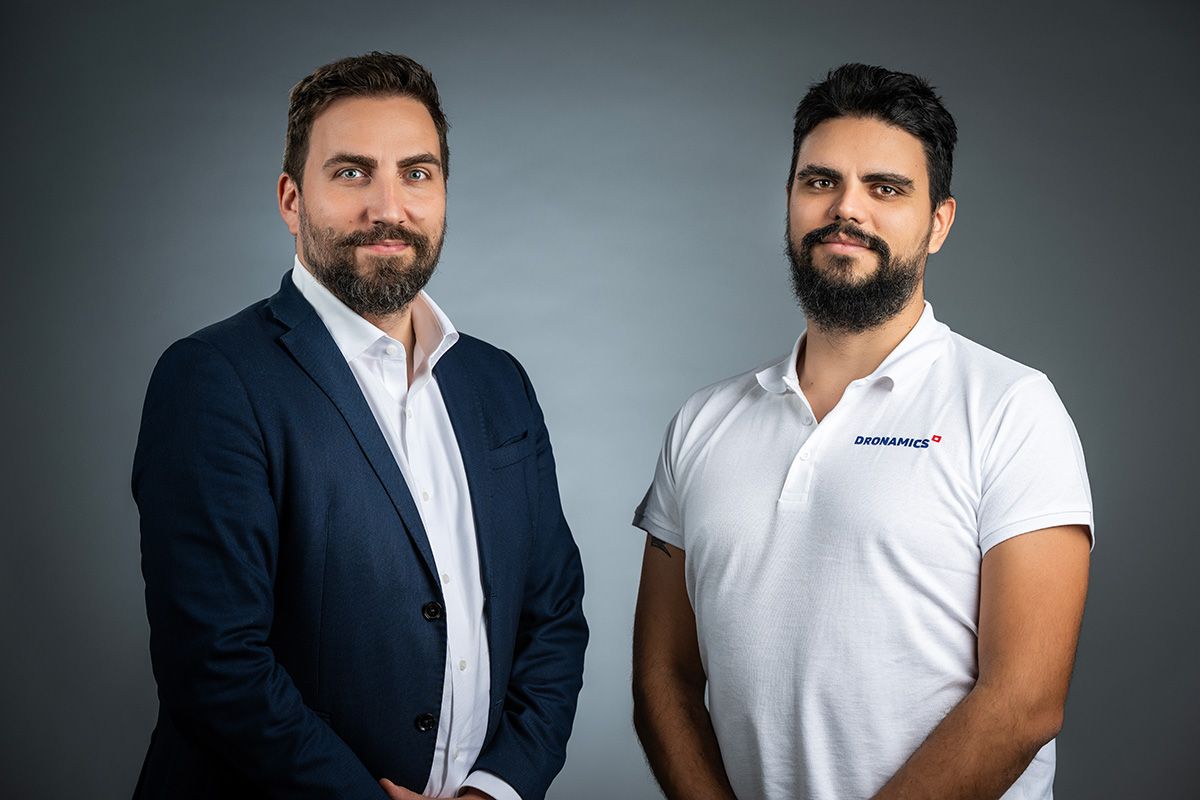The employee market is as competitive as ever. If you want to attract top talent to your early-stage startup, then you’ll need to up the ante of your offer. That means, offering employee equity.
“By offering employee equity, startups are not only attracting top talent but also creating a culture where innovation, teamwork, and shared success become the pillars of growth,” says Tom Lesche, Partner in our Fintech team. “To foster trust and avoid conflicts at a later point in time, it's essential to maintain transparent communication about the company's performance, equity structure, and valuation.”
Our followers clearly agree. In a LinkedIn poll with over 200 responses, 57 percent said they do offer employee equity. Another 15 percent said they're currently establishing employee equity and 18 percent are considering it. Only 10 percent said they do not offer employee equity.
By using tools like Ledgy, you can provide resources and training to help employees understand the intricacies of equity ownership, taxation, and the value of their shares. Eventually, informed and engaged employees are more likely to feel connected to the company's mission, leading to a stronger sense of ownership and commitment to the startup's long-term success.
In case you’re new to this world of employee equity and the complicated terms that come with it, we’ve collaborated with Joe Brennan at Ledgy, an equity firm management platform and Speedinvest portfolio company; Lukas Rippitsch at HROS, an HR Tech company focused on AI-based recruiting; as well as our own Legal and People (Platform+) team to offer a digestible look at the state of employee equity in the European startup ecosystem.
We let you know what you need to consider throughout the recruitment and hiring process––as well as once you’ve built a team––to ensure a healthy and viable company culture as your startup grows.
Joe Brennan, Ledgy Communications Lead, on the status of the European ecosystem
Together, companies and employees are raising equity standards in Europe. Despite an uncertain macro environment, 60 percent of European founders surveyed in Ledgy’s new State of Equity and Ownership report said they were planning to increase the generosity of their employee equity plans this year.
How to make everyone happy with equity
This is a positive development and works on two levels for companies. Focusing on equity makes the CFO happy because it conserves cash flow when companies are trying to slow burn and extend the runway. But it also makes the CEO happy, because equity is key to aligning the whole company behind the same long-term mission and vision. When leaders paint their team a picture of what the company will look like when the downturn ends, people’s equity is the long-term component that will be there waiting for them on the other side.
But even though Europe is making progress, the most attractive equity packages are still found across the Atlantic. US companies tend to allocate between 15 percent and 20 percent of the company to employees, while the 10 to 15 percent range is still most common in Europe. A US startup is six times more likely to allocate 20 percent or more to the team than a German company.
Simple steps to communicate better about equity
More companies should take practical steps to make equity real and tangible for the team. Take strike prices, for instance. Nominal strike prices give employees a less intimidating sum of money to pay when they turn their share options into shares. Even in the UK, usually seen as the European market leader for equity, only 40 percent of strike prices are nominal. If team members are shocked when they realize they have a bill of potentially thousands of pounds or euros to pay in order to become shareholders, the business has failed to properly communicate with them about their ownership.
But looking forward, the picture is bright. Twice as many French founders and four times more German founders have spent significant time thinking about employee equity when fundraising compared to the previous year. If more European companies put employee equity at the center of their strategy and development, Europe’s progress will continue.
Nora Frizberg, General Counsel at Speedinvest, on what to look out for as an early-stage founder
As an early-stage founder, there are key considerations you will want to make and best practices to follow. Here, we cover some of what we think are the most important, as well as some pitfalls to watch out for.
Size of the Option Pool
The option pool size should depend on a company’s hiring plan, based on current gaps and planned future growth. There needs to be a large enough pool to be able to win and adequately incentivize world class talent. But the larger the pool, the more the founders and existing shareholders are diluted. It is therefore important to strike a sensible balance between these poles.
However, in the early stages, setting up an unallocated employee option pool of around 10 percent of the company’s fully diluted share capital (or a PSOP/VSOP structure of equivalent value and size) is considered market standard.
Standard Vesting and Cliff
Employee option pools are typically subject to vesting provisions which ensure that only those employees, who have dedicated themselves to the company for a considerable period of time, will get to exercise their options and be issued shares in the company. A four-year vesting and a one-year cliff are quite standard, although this will vary depending on the particular circumstances. Sometimes, a vesting period of three or five years is agreed upon, but usually not more or less than that.
Depending on the jurisdiction, this is structured in different ways. But the fundamental principle is the same: With a monthly or quarterly vesting over a period of four years, if the employment relationship is terminated after two years, the employee can only exercise 50 percent of their options. In other words, the employee is only issued a corresponding amount of shares with which they can participate in a potential exit. If they leave after the four-year vesting period has lapsed, they get to exercise all options, because they are all fully vested.
Normally, the vesting is additionally subject to a one-year cliff, which means that the employee does not vest any options up until the first full year of tenure. But once the first year has lapsed, they vest the entire portion of options attributable to this first year (e.g. in the example of a four-year vesting, this would be 25 percent of their options).
Virtual or Phantom Stock Option Plans
In some jurisdictions, issuing options and shares to a (potentially large) number of employees imposes a significant administrative burden and costs on the company or employees. In these countries, virtual or phantom stock option plans (VSOPs / PSOPs) are more market standard. These are contractual agreements replicating an economic participation of the employees in an exit scenario as if they were shareholders, without, however, granting them any shares in the company.
Tax Treatment
Employee incentive schemes pose several complex tax questions, such as, when will the employee be taxed; upon the grant or exercise of the options and/or only in case of a liquidity event? And, secondly, what is the applicable tax rate? Therefore, a solid structure of the plan is key in order to secure its most favorable tax treatment for employees, which includes avoiding any tax payable on dry income and securing the best possible tax rate.
Nora’s best practices for an early-stage founder
While every founder’s experience is bound to be different, there are certain eternal truths and best practices to follow.
Stick to Standard Terms
In order to have a competitive option plan, it’s highly advisable to stick to market standard terms. Some of them are mentioned above, others are, for example, standard definitions of good and bad leaver events and vesting acceleration provisions.
Promise a number of options, not a percentage
A common mistake in the very early days of a startup is to promise employees, either orally or in writing, options corresponding to a certain percentage of the fully diluted share capital of the company, rather than a specific number of options. This leaves room for interpretation, in particular because this is a variable number and value of options, which changes with any other changes to the fully-diluted share capital of the company. This may lead to misunderstandings and disappointed expectations and should therefore be avoided by making sure to always promise employees a specific number of options.
Get Expert Advice
It is essential to have employee incentive schemes structured (and all documents drafted) by expert tax advisers and/or lawyers who are authorized to practice in the jurisdiction of the company / where the employee incentive scheme is set up.
Unusual terms or unfavorable structures cannot always be undone later on and might not lead to the desired incentivization of employees or, in the worst case, do significant (financial) harm, in particular in upside scenarios. The fees to be paid to such advisers might seem high in the very early stages of a company, but they are insignificant compared to the potential cost of unfavorable terms or structures.
Be Transparent
Given the potential complexity of employee incentive schemes, how they work and what an employee may eventually expect out of it, the number one rule for communication between the company and the employees is transparency. This means explaining the instrument to them, including their likely future dilution, showing them different scenarios of possible outcomes, as well as in the best case, giving them regular updates on any dilution and the value of their options/shares.
Have Clear Guidelines
Have clear guidelines on who gets (more or less) how many employee options, based on plausible criteria (e.g. role in the company, level of seniority, tenure). A lack of such guidelines can give employees the feeling of being treated unfairly, compared to their peers, or of the company being nontransparent with them.
Own the Option Pool Controlling
Finally, someone in the company or external (e.g. the tax adviser or lawyer) in both cases having the necessary understanding and skills, must be on top of the option pool controlling. This is typically the same person which controls the entire fully-diluted share capital of the company (for example, the CFO). A lack of this ownership can lead to unnecessary mistakes which might unsettle employees and investors alike. This should be avoided in order to maintain their trust.
Miriam Feyer, Head of People at Speedinvest, on shaping company culture
One important thing to acknowledge is that employee equity is a cultural tool that can shape what kind of company culture you will build.
The relationship with your team members
Even in the early days, when you might only have a handful of team members, it’s a good idea to think about how much equity you want to reserve for team members now and also down the line (issuing equity when new hires start and again down the line when compensation packages are increased/performance is rewarded).
Do you want to give each team member a slice of the pie? Or do you give equity to critical hires and team leads only? In the US, it’s common practice to give equity to all team members, whereas in Europe we see that startups give about two-thirds of their team equity. We assume that over time, more and more startups in Europe will opt to give their whole team equity. Whichever path you take, it will impact the kind of culture you build, determining who has skin in the game.
The co-founder relationship
Another important thing to consider is the amount of equity each co-founder has. This has a much larger impact on their relationship than one might think. Co-founders often pay themselves a low salary in the early days while building a new company from scratch. Founders are willing to take a lower salary in the hope that once their newly built company is successful and more mature, their hard work and sacrifice will pay off, especially through the equity they hold.
Often, co-founders do not hold the same amount of equity. The amount each co-founder holds may depend on their role at the startup, when they joined the startup, their previous work experience and other factors. We’ve seen that the difference in equity issued to co-founders may not be a problem in the early days but can turn into a conflict down the line. After time has passed and co-founders have poured their heart and soul into their company, they may no longer feel that a difference in equity is fair. And those who hold less equity may start to feel that they should hold more equity. This can lead to conflict between co-founders––sometimes to a degree that cannot be resolved without outside help.
To avoid this kind of co-founder conflict down the line, it's a good idea to ask your investors/board members in the early days––as an independent, external party––to weigh in or decide on how much equity each co-founder should receive. The investor or board members should base their decision on objective factors, such as previous experience and the role held in the startup. If the decisions are made based on objective factors and by an external party, then this will hopefully help ensure co-founders don’t start holding a grudge against one another.
Lukas Rippitsch, CEO at HROS on what applicants and employees have to say
It won’t surprise you that ESOP/VSOP is a fixed component of each salary negotiation in early-stage startups. Candidates are already asking in the first screening calls about the availability of option / share programs and use the answer they get for an early decision to either proceed or stop the process.
Understanding of ESOP is getting better
By processing more than 3,000 candidates for early-stage startups in Central Europe, we have seen that the overall understanding of ESOP is getting better among younger talents. In most cases, candidates ask detailed questions regarding vesting, thesize of ESOP, and different vesting schemes. A few years ago, we would have spent half an hour for each candidate to educate talents on what ESOP actually means.
Equity for better candidates
A clear trend that we could see is that especially for “stronger” candidates, ESOP or even direct share packages became the most relevant milestone they want to negotiate with the founding team. Over two-thirds of key hires done in 2022 proactively asked for an ESOP package as part of their remuneration deal.
An equity program is no replacement for salary
Another interesting trend is that a sizable ESOP package is not a linear replacement for a decent salary. We see that most strong candidates have a base salary in mind that they are not willing to negotiate. In addition, they expect the startup to give them a long-term incentive to ensure their motivation and their buy-in.
Size, taxes, and terms still with a question mark
If we would ask candidates what they would wish for in terms of ESOP, the message is also clear. Once an ESOP package is established in a startup and shares are granted, employees wish for yearly review meetings, transparent documentation, learning sessions, and refresher training regarding ESOP terms, ESOP in practice, and potential taxation if a liquidity event is triggered.
Want more updates on our portfolio? Sign up for our monthly newsletter and follow us on LinkedIn.









